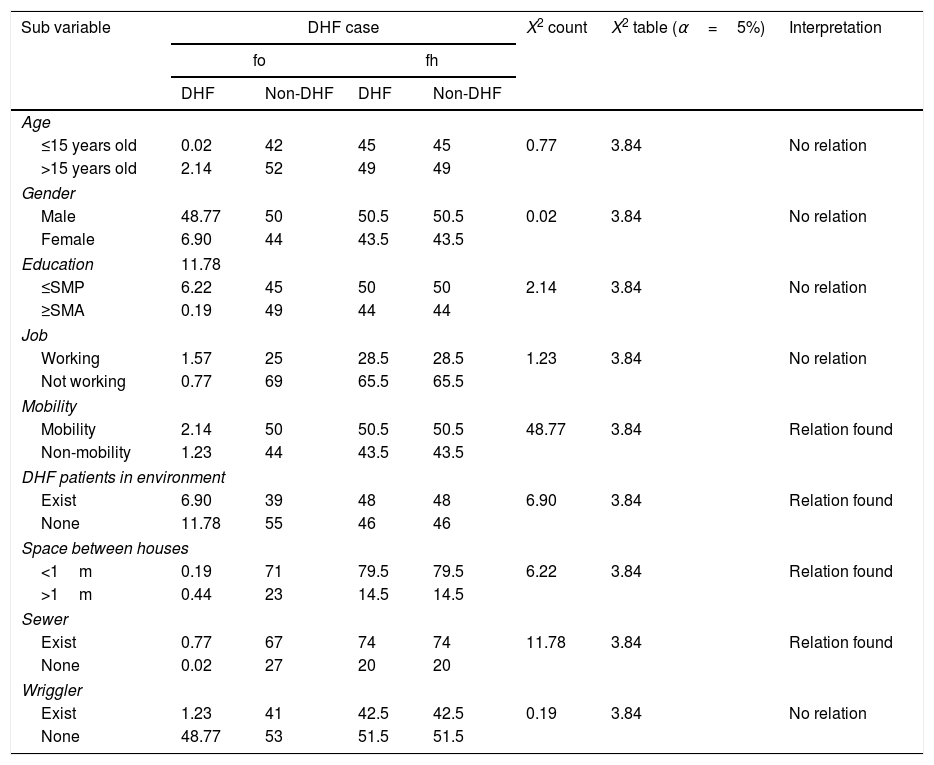In Malang City, the number of dengue cases in the last three years has increased.
MethodThe test was used to determine the relationship between sociodemography and the environment with Dengue Fever in Malang. This type of research uses a Case-control design. The research subjects were 188 respondents. Research instruments in the form of questionnaires, observation and interview techniques.
ResultsThe results showed variables that were significantly associated with the incidence of DHF were mobilization, the presence of DHF patients in the environment, the distance between houses and water containers. While DHF is variables, gender, education, work presence of larvae ornamental plants and behavior.
ConclusionThe conclusion in this study is there is a relationship between mobilization, the presence of DHF patients in the environment, the distance between houses, and water containers with the incidence of Dengue Hemorrhagic Fever (DHF) in Malang.
Artículo
Comprando el artículo el PDF del mismo podrá ser descargado
Precio 19,34 €
Comprar ahora







